The Common Grackle, also known as the Black Bird with a Blue Head, is a striking species of bird that is found in North America. These birds are known for their glossy black feathers, distinctive blue-black heads, and sharp, metallic call that can be heard in both urban and rural areas.
In this blog post, we will delve into the characteristics and behavior of the Common Grackle, as well as their importance to the ecosystem. Whether you are a birdwatcher, nature lover, or just someone who is curious about these fascinating creatures, this post is for you. So, let’s get started!
The Unique Features of the Common Grackle: An Overview
The common grackle is a large black bird with a red-orange head and black-and-white tail. They are common across North America and are known for their aggressive behavior and large nest sizes.
Common grackles are omnivorous species that obtain energy from both plant and animal matter and can be a nuisance to farmers and agricultural workers due to their propensity for damaging crops as well as spreading the fatal human respiratory disease histoplasmosis.

Common grackles measure 11 to 13 inches in length and weigh 2.6 ounces to 5 pounds with a 14-inch wingspan.
They flourish in multiple environments but usually build their nests near water, and high up in coniferous trees. Occasionally they make their homes in some uncommon places, like birdhouses, hollows of trees, and even the nests of other animals–sometimes when they’re already taken!
The heads of Atlantic coast common grackles are even more dazzlingly in a mix of blues and purples, while their bodies shimmer in bronze. Compared to other blackbirds, they are much bigger and lankier, with striking bluish-green hues giving them even greater vibrancy.
Backyard Tips for the black bird with a blue head
Common grackles can often be attracted to bird feeders that offer them a variety of mixed grains and seeds. Scatter grain or seed on the ground as this is where common grackles prefer to feed.
Avoid feeding common grackles too much grain, as this can lead to obesity and health problems.
Keep in mind that too much grain scattered on the ground can attract rodents, and these can damage the feeders and eat the common grackles’ food.
Common grackles are known to be opportunistic, so they will take advantage of any food left unattended.
Therefore, providing nest material for birds to attract common grackles can help encourage them to visit the feeder.

They can be attracted to backyard habitats by installing black-oilbird feeders, providing trees with berries or nesting materials, and planting black-bird or blackbird-friendly plants.
How to Identify a Common Grackle: A Guide for Bird Watchers: Species of Grackles
These species vary in size and appearance but all have black plumage with bright red or yellow markings on the head and back.
Their beaks are long and pointed, making them adept at eating seeds, berries, insects, grubs, and other carrion.
Most grackles feed on the ground but some species take flight for short periods of time.
Common Grackle

Common grackles are large icterid passerines native to North America.
They are species of birds common in open areas such as farmlands and groves, where they feed on berries, insects, and other small invertebrates.
Common grackles are omnivorous, and capable of eating both plant and animal matter.
These black birds with blue heads can be a nuisance to farmers and residents due to their propensity for damaging crops and spreading disease.
Common grackles are found in five countries in North America, inhabiting open areas such as farmlands and groves.
They can reach sizes of 11-13 inches long with a wingspan of up to 18 inches.
This species is known for its large brightly-colored plumage, which includes a blue head and yellow eyes.
Great-Tailed Grackle
The Great-Tilled grackle is a common black bird found in the region from Texas and Oklahoma to southern California.
This species has bold yellow eyes, a broad fan-shaped tail, and a flat head. Females are slightly smaller than males, with duller plumage and a lighter brown eyebrow.
These birds are omnivores, meaning they can eat both plants and animals. They are diurnal animals, meaning they are active during the day and sleep at night.
The grackles feed on insects, seeds, berries, nuts, and other small invertebrates.
Their large appetites can lead to significant population growth, making them vital for the survival of their ecosystems.
Boat-Tailed Grackle

Boat-tailed grackles are common bird species found in the United States, particularly in the southern parts of the country.
These birds can be easily identified due to their large size and rounded head. They typically have black plumage with a purple iridescent sheen on their head and neck.
The male boat-tailed grackle is often distinguished by its black body and purple feathers on its head and neck.
In addition, the male has a distinctive call that can be heard only during the breeding season.
During feedings, boat-tailed grackles are known to feed both on plant matter and animal protein.
This makes them some of the most omnivorous bird species in North America.
Bronzed vs. Purple Subspecies
The Bronzed Grackle and the Purple Grackle are two subspecies of the Common Grackle (Quiscalus quiscula).
The Bronzed Grackle (Quiscalus quiscula quiscula) is found in the eastern part of North America and has a bronze or iridescent green color.
On the other hand, the Purple Grackle (Quiscalus quiscula versicolor) is found in the western part of North America and has a more iridescent purple color.
Both subspecies are members of the blackbird family Icteridae and are not related to the corvid family (Corvidae)
Common Grackle Photos and Videos
The Common Grackle is a black bird with a red-orange crown and back. It has black-and-white-striped wings and tail, and a bright blue head.
The Common Grackle can be found in many parts of the world, including areas of the United States, southern Europe, Africa, and Australia.
This common species can be found in open agricultural areas as well as forests.
The grackle can be identified by its black-and-white-banded tail and red-orange crown. It can be recognized by its black body with white markings on its wings and tail.
It has yellow eyes that are highlighted red in the breeding season. When threatened, it flaps its wings loudly to scare away predators.
Adult male
Adult male common grackles are larger than female common grackles, with an average mass of 122g.
They have long and dark bills, pale yellow eyes, and a long tail with iridescent feathers on the head.
These black-billed birds are often seen flapping their wings and can be identified by their large size and long red tails.
They also commonly engage in anting behavior, which involves them depositing a musky-smelling substance on trees or other surfaces for other common grackles to feed upon.
This is a common form of communal feeder behavior among grackles and can help maintain the species’ population numbers in areas where the birds can’t naturally find adequate food sources.
Female
Female common grackles are smaller than males, with shorter tails and less iridescent plumage that appears more brown.
Juvenile grackles look similar to females, except for their eyes which are dark brown.
The feathers of female common grackles appear purple and green on their wings and back and blue and violet on their heads and chest.
Female common grackles have a pale yellow eye color and a dark beak, making them easily identifiable in the flock.
People can find photos and videos of female common grackles online by searching for keywords such as “female common grackle” or “common grackle female.”
These photos can help people identify common grackle species in the wild or on farms.
Female (Purple form)
Common grackle females have notably shorter tails than males. Their plumage is lighter, appearing browner, with dark, glossy wings.
Juvenile common grackle females look similar to females, except for their eyes, which are black.
They can be identified by their brighter yellow eye-rings and forehead tufts of black feathers.
Females are slightly less glossy than males and have bright golden eyes.
They are also known for their raucous chattering, making them one of the commonest bird species in North America.
Common grackle flocks can be found roosting and foraging in large groups throughout the year. These flocks can number in the hundreds or thousands.
They can be seen flying in flocks and flushing insects from trees and buildings at dusk and dawn.
Female (Bronze form)
The common grackle is a black bird with a blue head and is found east of the Allegheny Mountains.
It belongs to the family Accipitridae, which also includes hawks, eagles, and vultures. The common grackle can be distinguished from other blackbirds by its purple-blue plumage and its long tail.
Female common grackles are smaller than males and have shorter tails. Their plumage is lighter and less iridescent, appearing browner, with dark, glossy wings.
Female common grackles have pale yellow eyes and dark beaks. They feed on insects in summer and berries in winter.
The male common grackle is larger than the female and has a louder voice. Both male and female common grackles have black bodies with varying amounts of purple-blue feathers scattered across them.
Juvenile
Common grackle is a large icterid species found in large numbers throughout much of North America.
Common grackle is known for its black body, large yellow eyes, and long, black bill with a red tip.
Adults of common grackles can be identified by their long and dark bill, pale yellow eyes, and long tail.
Juvenile common grackles can easily be identified by their black body, white eyes, and smaller bill.
Photos and videos of common grackles can be found online; be sure to look for ones that show the bird in flight or at rest.
As an icterid species, the common grackle is known for its acrobatic flying abilities.
These birds can fly long distances with ease, often seen swooping down from the sky to feed on insects from the ground.
The Diet and Feeding Habits of Common Grackles: What Do They Eat?
Common Grackles feed on a variety of foods, including grains, seeds, and insects.
They primarily eat cracked corn and sunflower seeds but can also feed on peanuts, suet, berries, and other fruits.
They also feed on insects such as wasps, spiders, moths, grasshoppers, and beetles.
During the summer months, grackles feed on small fish, frogs, lizards, eggs, and young of other birds. In winter they supplement their diet with berries and seeds.
Do Grackles Migrate?
Grackles are common year-round in the United States, with those that breed in the northern part of their range migrating short distances for winter.
Common grackles are resident to short-term migrants in their range, with populations breeding north of the Carolinas and migratory populations breeding in the central and southern parts of the U.S. during winter.
In the summer grackles may be seen anywhere in sunny open areas such as fields, beaches, farms, and parks.
Some common grackle subspecies can be found over broad areas of eastern North America east of the Rockies.
During the breeding season, grackles can be seen congregating on large agricultural feeders for food or roosting flocks of several hundred birds at large deciduous trees such as oaks or maples.
Common grackles prefer open areas with ample access to water and can be seen feeding on invertebrates, small fish, and insects.
They also may glean from open windows or feed from bird feeders.
It is quite common to come across other varieties of blackbirds, such as European starlings, red-winged blackbirds, and cowbirds, while they are migrating.
Witnessing a huge flock covers the sky with their presence is an awe-inspiring and remarkable experience.
The Breeding and Nesting Habits of Common Grackles: A Look into Their Reproductive Cycle
The grackle has a long black bill, a black body with white patches on its flanks, and a black tail. It is a large bird with a length of about 30-35 cm and weighs about 200-300 g.
The grackle is a gregarious bird that lives in large colonies of up to 125 birds.
The grackle is an omnivorous species and feeds on insects, seeds, and other small animals.
They can be seen perched on tree branches, wires, poles, or trees themselves. The grackle nests in trees and shrubs, building a cup-shaped nest made of twigs, leaves, and mud.
The grackle lays three to six eggs per clutch. Young grackles fledge at about two months old and are able to fly shortly after leaving the nest.
Are Grackles Corvids?
No, Grackles are not Corvids. Grackles are members of the blackbird family Icteridae, which also includes meadowlarks, Bobolinks, and orioles.
While grackles may share some similarities with crows, such as their intelligence and adaptability, they are not closely related, crows which are corvids are more closely related to jays and magpies.
How Climate Change Will Reshape the Range of the Common Grackle
The Common Grackle bird has been able to adapt to past climate changes and will continue to do so with the current warming temperatures.
However, climate change can also bring changes to the amount of rain an area gets, causing some places to flood and others to dry out.
This can change the world’s different types of habitats and raise temperatures by 2.2 degrees Celsius by 2100 and 4.6 degrees Celsius by 2500.
This can also cause sea levels to rise and force 13.1 million people in the US to move. Climate change can also affect where different species live and how land is used.
It can change the relationship between plants and their surroundings and make some plants grow more easily in new places.
Also, rising temperatures can harm the economy, like in India where it could decrease work hours and lose up to 4.5% of the country’s money made each year.
Climate threats facing the Common Grackle
The Common Grackle is facing significant threats from climate change, including Fire Weather, Spring Heat Waves, and Urbanization.
The species will need to adapt to these changing conditions in order to survive, and it is important for us to take action to protect their habitats and ensure their continued survival.
This can include reducing greenhouse gas emissions, protecting critical habitats, and promoting sustainable land-use practices.
Fire Weather
Fire Weather is a growing concern as it can destroy the bird’s habitats and food sources, leading to a decline in population.
The frequency and intensity of fires are increasing due to warming temperatures, prolonged droughts, and changes in precipitation patterns.
Spring Heat Waves
Spring Heat Waves are also a threat to the Common Grackle, as the species relies on a stable and predictable spring for breeding.
Rising temperatures and unpredictable weather patterns can disrupt the bird’s breeding cycle, making it more difficult for them to successfully raise their young.
The increased frequency and intensity of heat waves can also have negative impacts on the bird’s food sources, making it more difficult for them to find the nutrients they need to survive.
Urbanization
Urbanization is another threat to the Common Grackle, as urbanization can lead to the destruction of their habitats and the loss of food sources.
The spread of cities and towns can also result in increased competition for resources, as other species may outcompete the Common Grackle for food and nesting sites.
Another factor to consider it the noise and light pollution associated with urbanization can also be stressful for the bird, making it more difficult for them to thrive.
Is a common grackle rare?
Common grackles are not considered to be rare birds. They are widely distributed across North America and are quite abundant in many regions.
They are known for their iridescent black plumage and their noisy, gregarious behavior.
While they may be considered a nuisance by some people due to their tendency to flock to urban areas and feed on crops, they are not considered rare or endangered.
What does it mean if you see a common grackle?
When you see a common grackle, it can bring up a variety of thoughts and interpretations, depending on who you ask.
For some, it might signify the arrival of spring or summer, as these birds are migratory and often return to their breeding grounds during this time.
For others, spotting a common grackle might indicate the presence of urban areas, as these birds are quite comfortable in cities and suburbs, finding food and nesting opportunities there.
Overall, the common grackle is a pretty widespread bird in North America, and seeing one can be a reminder of nature’s resilience and its ability to adapt to different environments.
Whether you think of them as harbingers of the season or symbols of urbanization, these birds are certainly not rare and are an integral part of the diverse birdlife in North America.
Are Common Grackles aggressive?
Common Grackles have a reputation for being aggressive in certain situations.
They are larger birds that are known to haunt backyards and intimidate smaller birds with their loud and boisterous behavior.
They tend to gather in flocks to scare other birds and attack their nests, and have been known to kill and eat smaller birds like sparrows.
Some believe that their aggression is a survival strategy for their species.
However, it’s worth mentioning that male common grackles are less aggressive toward each other and are more social and cooperative compared to the larger boat-tailed grackle species.
It’s important to remember that Common Grackles are migratory birds, and their aggressive behavior may only be a seasonal problem.
Conclusion
The common grackle is a black bird with a blue head and yellow-orange bill.
These birds are large, black-feathered fliers that feed on the ground, trees, and shrubs of residential areas. They can be noisy and are known for their loud cackling calls.
In recent years, grackles have been expanding northward and southward, in part due to changes in land-use patterns such as urbanization and agricultural expansion.
Because grackles eat large amounts of crop feeders and fruits from trees, they can cause extensive damage to fruit crops.
They can also carry salmonella bacteria, which can make humans ill.
A common grackle nest can be as large as an orange-sized ball of twigs or grasses lined with leafy material.
The species has experienced widespread range loss because of habitat loss from development and agriculture expansion as well as the effects of invasive species (like the brown-headed cowbird) on the species’ food supply.
To protect the common grackle species from further range losses, it is important to keep open areas like fields clear of brush and vegetation so that grackles have room to nest.







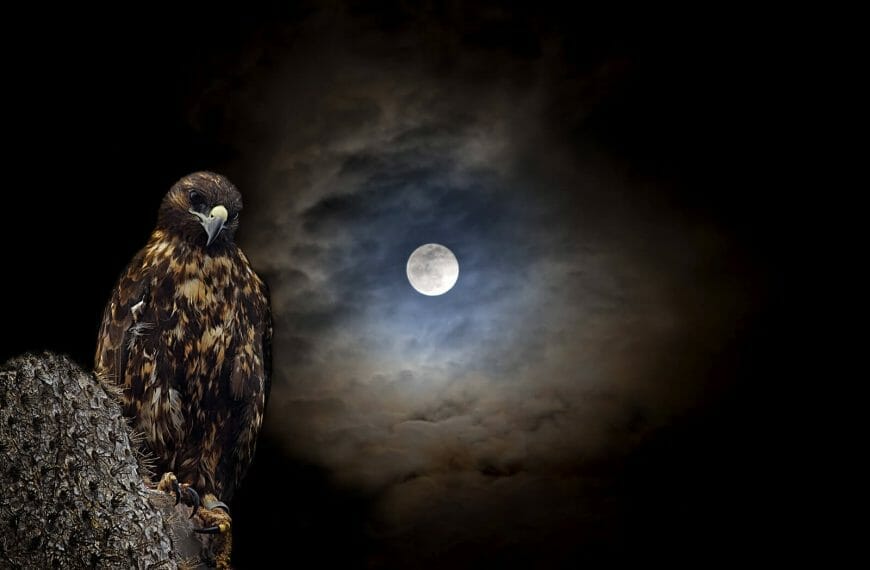


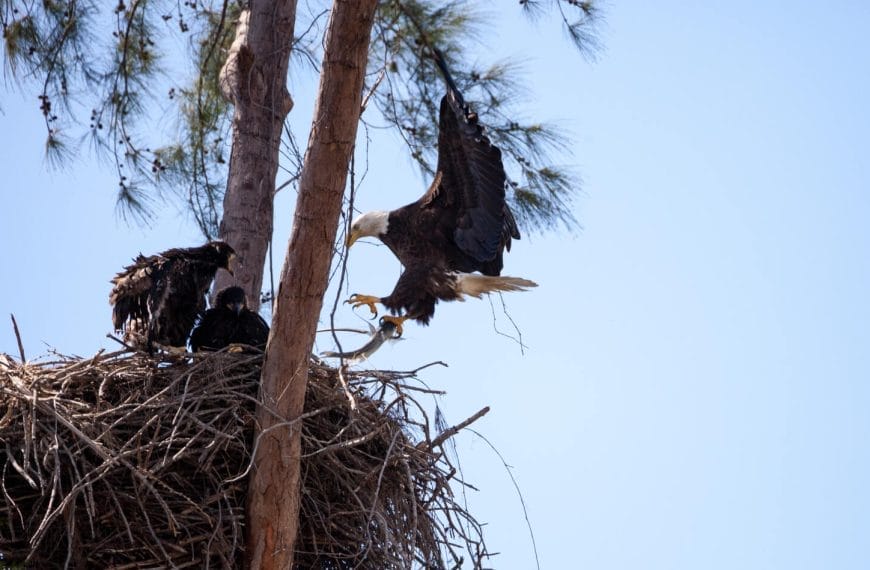



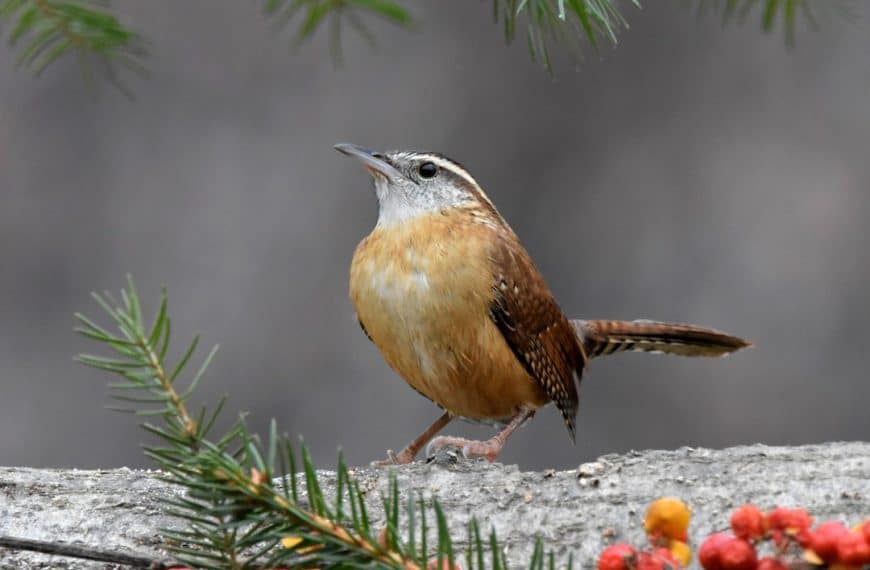


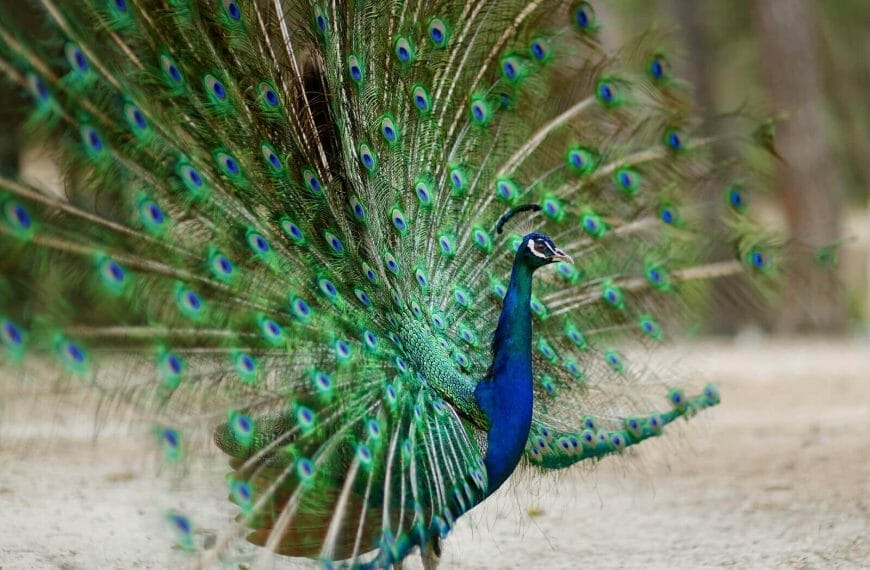


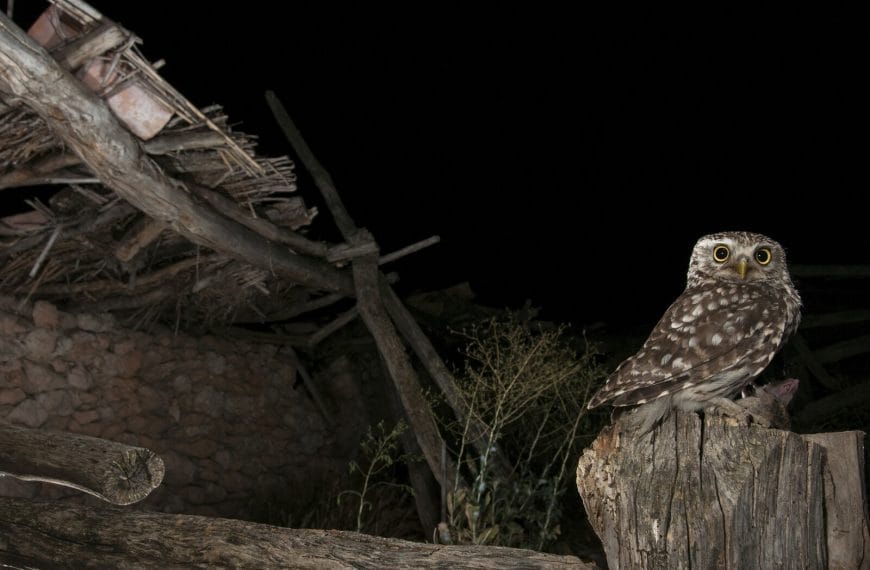


![How to Keep Birds Off Your Boat: Ways and [Best] Deterrents to Keep Birds Away From Your Boat](https://ekz2dfuukk8.exactdn.com/storage/2023/05/how-to-keep-birds-of-your-boat-870x570.jpg?strip=all&lossy=1&ssl=1)


![How to Identify Turkey Feathers [Ultimate Guide]](https://ekz2dfuukk8.exactdn.com/storage/2023/03/HOW_TO_IDENTIFY_TURKEY_FEATHERS.jpg?strip=all&lossy=1&ssl=1)





